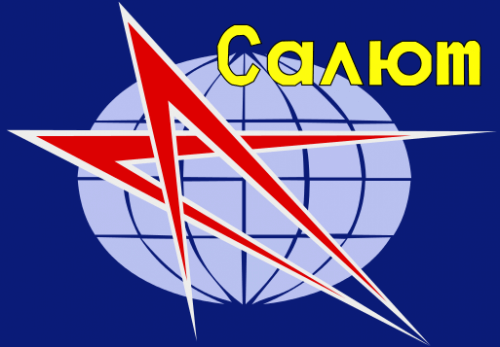The laboratory disintegrated in space, before the cosmonauts could reach it and the two Soyuz missions planned for it became short-term scientific missions

In May 1972, the Russians were about to launch a space laboratory, but the plan was postponed to July. The launch was made on the postponed date, but a malfunction in the second stage of the launcher caused it to return to the ground and be destroyed along with its cargo in the atmosphere. Another launch attempt in September was canceled in advance. At the end of March 1973, the two surveillance ships "Yuri Gagarin" and "Komarov" arrived in the Atlantic Ocean. It was clear that the Russians were going to carry out a manned launch, and indeed on April 3.4.1973, 2, the Soliot 260 space laboratory was launched. The orbit of the laboratory was 215-51.6 km, the angle of inclination 88.9 degrees and the duration of the orbit 10.4 minutes. This trajectory would have allowed the laboratory to pass over its launch base on 20. A day later, on the 15th lap, the route was changed. The release point was raised by 88.3 km and the duration of the lap was 9.4 minutes. This correction brought forward the transition over the launch pad to 5 and allowed a transition over the base every XNUMX days.
2 teams were going to join the laboratory. Each team for a period of 30 days. According to the new regulations, the astronauts must wear space suits during the launch. On 14.4 in the 83rd lap, the route was changed to 296-261 km and the duration of the lap was 89.9 minutes. On 15.4 the laboratory was dismantled. The last route was 228-223 km, the angle of inclination 51.5 degrees and the duration of the lap 89 minutes. On 28.4/2 it was reported that Soliot XNUMX had completed its mission. Observations in the West revealed that the laboratory had been launched by the Proton Launcher and that destroyed parts of the upper stage were seen around the laboratory.
Soyuz 12
On September 27.9.1973, 12, Soyuz 11 was launched with the astronauts Vasily Lazarev the flight commander and Oleg Makrob the flight engineer for two days. The spacecraft in which the astronauts were launched was an improved Soyuz spacecraft. The goals of the flight were to test it and in particular its navigation systems, its maneuverability, to test economic propulsion units and to test all the possible and necessary changes introduced in the spacecraft. These changes have delayed the space program since the Soyuz XNUMX disaster. Secondary goals were solar observations and exploration of the Earth's surface.
Soyuz 12 was launched into an orbit of 343-325 km, an inclination angle of 51.58 degrees and a lap duration of 91.2 minutes. After 5 laps the route was changed to 362-345 km and the duration of the lap was 91.1 minutes. The next day the route was changed to 345-326 km. During their flight, the astronauts wore new, light and comfortable space suits. As part of the new safety measures, the astronauts were required to wear the space suits for the first 2 laps, during the preparations for the return to Earth and during all stages of the landing.
After a stay of 47 hours and 16 minutes, Soyuz 12 landed at 29.9 500 km south of Karaganda. At an altitude of 7.5 km, a large parachute deployed and near the ground the braking mechanism was activated. The astronauts also trained for the possibility of an emergency sea landing.
Soyuz 13
On 18.12.1973, Soyuz 13 was launched with the astronauts Pyotr Klimok, the spacecraft commander, Valentin Lebedov, the flight engineer, for 8 days and they had to perform several tasks, and for this the orbital chamber was converted into a scientific laboratory.
1. Explore the surface of the country as part of a plan to cover the national natural treasures.
2. Observations towards the sun and the stars using the new ultraviolet telescope Orion 2 to measure stars on the order of one-tenth the size of the sun and to photograph the sun in X-rays.
3. Test the spacecraft and its systems - this spacecraft is identical to Soyuz 12 and the astronauts must test its navigation systems, the manual and automatic control systems. All this in preparation for the flight with the American Apollo spaceship on July 15.7.1975, XNUMX. Testing the spacecraft's ecosystem was done as part of experiments related to future interstellar flights.
4. Oasis 2 - to test a system for producing proteins from human body waste and microorganisms for long-haul flights.
5. Testing the effect of weightlessness on the human body and blood circulation in the brain.
6. Take care of the garden - greenhouse.
Soyuz 13 was launched into an orbit of 253-222 km, the angle of inclination 51.7 degrees and the duration of the orbit 89.22 minutes. In the 5th lap, the track is changed to a circular one.
19.12 - It was reported that the astronauts got used to the weightlessness.
20.12 - The astronauts completed the preparation of the scientific equipment and the cleaning of the telescopes.
25.12 - It was reported that the astronauts are completing the work plan more quickly than they thought.
26.12 - After a stay of 7 days 20 hours 9 and 37 minutes in space, Soyuz 13 landed safely 200 km southwest of Karaganda.
Anxiety filled the hearts of the flight controllers during the return to Israel. The weather at the landing site was bad. A strong blizzard then broke out, strong winds battered the spaceship and visibility was poor. Despite this, the spacecraft landed at the landing site as planned. The only problem that bothered the astronauts during the flight was dirty windows.
